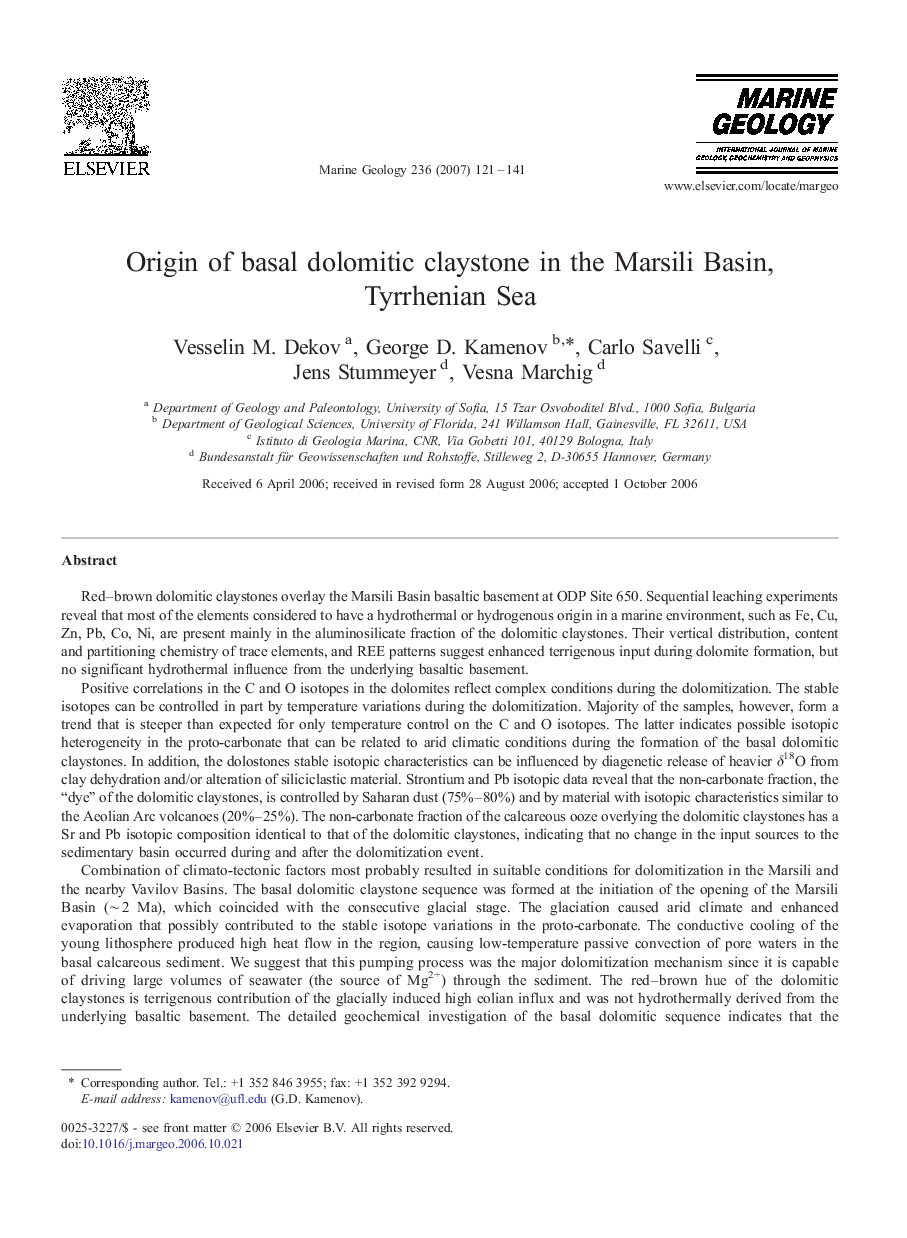| کد مقاله | کد نشریه | سال انتشار | مقاله انگلیسی | نسخه تمام متن |
|---|---|---|---|---|
| 4719543 | 1639201 | 2007 | 21 صفحه PDF | دانلود رایگان |

Red–brown dolomitic claystones overlay the Marsili Basin basaltic basement at ODP Site 650. Sequential leaching experiments reveal that most of the elements considered to have a hydrothermal or hydrogenous origin in a marine environment, such as Fe, Cu, Zn, Pb, Co, Ni, are present mainly in the aluminosilicate fraction of the dolomitic claystones. Their vertical distribution, content and partitioning chemistry of trace elements, and REE patterns suggest enhanced terrigenous input during dolomite formation, but no significant hydrothermal influence from the underlying basaltic basement.Positive correlations in the C and O isotopes in the dolomites reflect complex conditions during the dolomitization. The stable isotopes can be controlled in part by temperature variations during the dolomitization. Majority of the samples, however, form a trend that is steeper than expected for only temperature control on the C and O isotopes. The latter indicates possible isotopic heterogeneity in the proto-carbonate that can be related to arid climatic conditions during the formation of the basal dolomitic claystones. In addition, the dolostones stable isotopic characteristics can be influenced by diagenetic release of heavier δ18O from clay dehydration and/or alteration of siliciclastic material. Strontium and Pb isotopic data reveal that the non-carbonate fraction, the “dye” of the dolomitic claystones, is controlled by Saharan dust (75%–80%) and by material with isotopic characteristics similar to the Aeolian Arc volcanoes (20%–25%). The non-carbonate fraction of the calcareous ooze overlying the dolomitic claystones has a Sr and Pb isotopic composition identical to that of the dolomitic claystones, indicating that no change in the input sources to the sedimentary basin occurred during and after the dolomitization event.Combination of climato-tectonic factors most probably resulted in suitable conditions for dolomitization in the Marsili and the nearby Vavilov Basins. The basal dolomitic claystone sequence was formed at the initiation of the opening of the Marsili Basin (∼ 2 Ma), which coincided with the consecutive glacial stage. The glaciation caused arid climate and enhanced evaporation that possibly contributed to the stable isotope variations in the proto-carbonate. The conductive cooling of the young lithosphere produced high heat flow in the region, causing low-temperature passive convection of pore waters in the basal calcareous sediment. We suggest that this pumping process was the major dolomitization mechanism since it is capable of driving large volumes of seawater (the source of Mg2+) through the sediment. The red–brown hue of the dolomitic claystones is terrigenous contribution of the glacially induced high eolian influx and was not hydrothermally derived from the underlying basaltic basement. The detailed geochemical investigation of the basal dolomitic sequence indicates that the dolomitization was most probably related to complex tectono-climatic conditions set by the initial opening stages of the Marsili Basin and glaciation.
Journal: Marine Geology - Volume 236, Issues 3–4, 1 February 2007, Pages 121–141